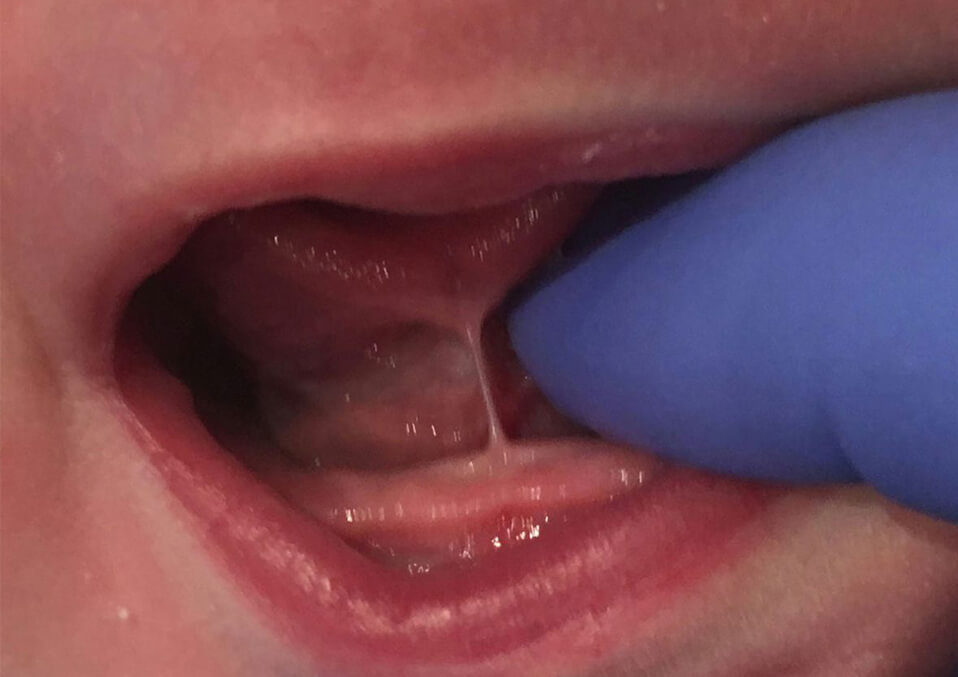
Lactation is the essential nutrition aspect for the baby in the first 1,000 days. But one of the challenging situations is the mother feels pain during breastfeeding. It happens because of the ankyloglossia or known as tongue-tie. It is a state that makes breastfeeding difficult and painful in the part of the mother.
Tongue-tie result in mothers abandoning breastfeeding altogether. They will lead to giving formula milk instead which compromises the nutrition value and the opportunity for the baby to invigorate resiliency with the colostrum. Your baby is tongue-tied when he is not able to give their tongue out and over the gums that leads to drawing more to areola into the mouth to bring the milk. The baby will be rooting on the nipple to suck more milk and causing pain to the mother.
Tongue-tie explained

A tongue is considered ‘tied’ when there is restriction of movement. A healthy fetus includes the development and growth of frenums that attaches the tongue to the lower jaw. Some babies have overgrown the tissue that resulted in difficulty of moving their tongue. This affected the sucking of milk during breastfeeding. There is also a case where the baby’s lips are attached in the gums making it challenging to clutch the nipple.
The baby’s tongue-tie is classified according to the location of the attachment of the frenum
- Category 1- the frenum is attached on the very tip of the tongue
- Category 2- frenum is a little far behind the tip of the tongue
- Category 3- Frenum is close to the base of the tongue
- Category 4- Can be submucosal and also known as posterior ties.
How does baby’s tongue-tie affect breastfeeding and its nutritional benefits?

Baby’s tongue-tie results in sucking vigorously the nipple that can cause damage and pain. They could not latch long, and in the long-run, the baby will no longer take the mother’s breast milk. As a result, the mother’s breast milk supply will be depleted leading to feeding the baby with formula milk. The problem of formula milk in infants is that it does not suffice the ultimate nutrition benefits that only the mother’s milk can provide.
The baby’s tongue-tie can lead to:
- Breastfeeding problem
- Speech difficulties
- Poor oral hygiene
- The complexity of doing other oral activities
Tips to help you manage baby’s tongue-tie and possibly succeed:

1. Ask the hospital to check for tongue-tie
Checking for tongue-tie in the hospital a few days of baby’s life is a usual practice. But it will be better to ask assurance from the doctor that a thorough check is done. Sometimes, checking the position and location of the frenum is often missed.
2. Ask the clip procedure earlier
Some parents will say the clipping the tongue-tie may no longer necessary like having a circumcision for your son. Of course, you do not want your baby to suffer pain. Wounds can result in pain, bleeding, and infection. But ponder the long-term sway on the child. If the doctor advises that clipping will be the best option, then have it done as early as now. If the tongue-ties is left untreated, it will have an extreme impact on the baby and to the mother. If the baby will suffer and not able to take the colostrum which is needed to complete the nutrition factors, the child will experience the consequence when grows up and get old just because a safe and straightforward procedure was not undertaken.
Clipping a tongue-tie is a decision that you must make with your doctor. The medical world today has several techniques and methods to keep your baby away from harm and risks.
3. Never look at the procedure
Before the procedure of clipping is done, the doctor will ask you if you want to be in the room to observe the process. The best advice is, do not go there and see your baby. A mother seeing her baby’s mouth full of blood will weaken. It can even bring psychosocial distress to the mother.
Do not worry and trust the medical practitioners for the successful and complete the whole procedure. The people in the operating room are trained enough to give your baby the best services they could. After the simple operation, the nurse will bring the baby back to you for breastfeeding.
4. Expect that clipping the tongue-tie may not immediately solve the problem.
According to the study, in a 24-hour timeframe, there were 80% of the case that babies were feeding better after the procedure. You need to contemplate that it will take time for the baby to relearn how to latch without the restriction. It will also take time for the mother to learn again with the baby on how the lactation will be done.
The time of relearning and adjustment may take a week of a month. It depends on the coping capacity of the baby and the mother. But the other best way to do this is for the mother to use a breast pump and place it in a bottle for the feeding. But the mother should continuously feed the baby in her breasts to develop the emotional and physical attachment of the mother and the baby.
5. Tongue exercises
There is a recommendation that you may buff the clipped area a few times every day with a clean finger. You press down and wipe back and forth to avoid reattachment.
6. Joining a breastfeeding group
Joining a group of mothers advocating for breastfeeding will help you get the empowerment. You will learn from the different experiences and lessons learned. When you are experiencing some lactating problems, the mothers can quickly provide you the support and advice. There may also be lactating mothers that are having the same experience with you.
Read also:
- The best magnesium supplement
- Overactive letdown during pregnancy
- How to increase breast milk production


